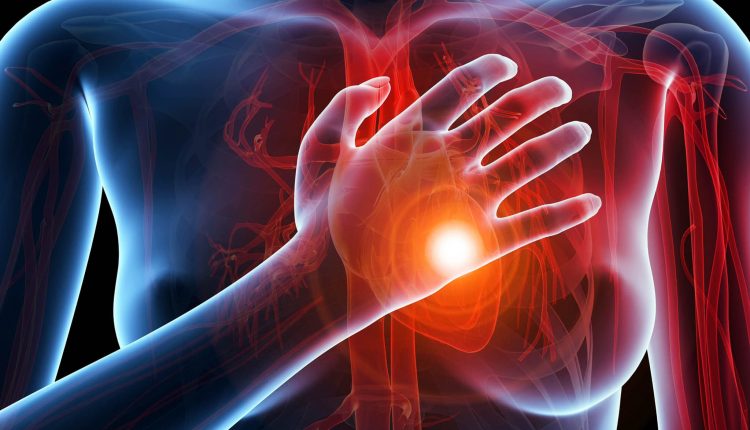
Cardiovascular diseases: what are angiology and vascular surgery examinations
Cardiovascular diseases are pathologies affecting the circulatory system, from the heart to the blood vessels and arteries
They usually develop with advancing age and in the presence of certain risk factors, but unhealthy behaviour (from smoking to poor physical activity and a high-fat diet) and the presence of other diseases can also play an important role.
Depending on their characteristics and the symptoms they cause, cardiovascular diseases can be more or less dangerous and require specific treatments
The vascular surgery examination (also referred to in many centres as an angiological examination) is a fundamental step to assess the condition of a patient affected by vascular disorders and to indicate the therapies, possible surgical solutions and preparatory tests necessary to adequately treat the disease.
Cardiovascular diseases, who is at risk?
The following are considered major risk factors
- High cholesterol
- High blood pressure
- Diabetes
- Age over 50 years
- Obesity
- Personal history of heart and cardiovascular disease
- Kidney disease
- An unhealthy lifestyle with smoking, sedentary lifestyle and poor diet also contributes.
Vascular surgery examination: when it is needed
The vascular surgery (or angiological) examination is essential both for the diagnosis of vascular pathologies and for the definition and planning of surgical treatment or therapy.
In fact, the examination, with the interview and viewing of the diagnostic tests, makes it possible to acquire the necessary information to prepare specific treatments in the case of vascular pathologies such as:
- Aneurysms and dissections (surgery of the large arterial vessels, thoracic aorta and thoraco-abdominal aorta).
- Stenosis of the supra-aortic trunks (carotids and subclavian)
- Aneurysms of the abdominal aorta
- Steno-obstructive pathology
- Aneurysmatic pathology of splanchnic vessels, such as renal and spleen vessels
- Stenosis of lower limb arteries up to so-called ‘limb salvage’ in cases of critical ischaemia.
In the course of the examination, pre-operative tests (e.g. blood tests, X-ray examinations, echo-Doppler, cardiological examinations), the timing and modalities of the operation (which can also be endovascular by percutaneous route) or therapy and follow-ups in cases where an operation is not necessary are determined and planned.
The vascular surgery visit also allows for an assessment of the possible presence of varicose veins and venous insufficiency, a condition that occurs when the veins in the legs do not allow blood to return properly to the heart.
The vascular surgeon also treats phlebitis and deep vein thrombosis (also extended to the iliac veins and vena cava, in collaboration with the haematologists of the Thrombosis Centre) and in the presence of lower limb ulcers assesses what the cause may be, so that the most appropriate treatment can be set up.
Read Also
Emergency Live Even More…Live: Download The New Free App Of Your Newspaper For IOS And Android
Heart Attack, Some Information For Citizens: What Is The Difference With Cardiac Arrest?
Heart Attack, Prediction And Prevention Thanks To Retinal Vessels And Artificial Intelligence
Full Dynamic Electrocardiogram According To Holter: What Is It?
In-Depth Analysis Of The Heart: Cardiac Magnetic Resonance Imaging (CARDIO – MRI)
Heart Attack Symptoms: What To Do In An Emergency, The Role Of CPR
Heart Attack: Guidelines For Recognising Symptoms
Chest Pain, Emergency Patient Management
Notions Of First Aid, The 5 Warning Signs Of A Heart Attack
Notions Of First Aid: The 3 Symptoms Of A Pulmonary Embolism
Holter Monitor: How Does It Work And When Is It Needed?
What Is Patient Pressure Management? An Overview
Head Up Tilt Test, How The Test That Investigates The Causes Of Vagal Syncope Works
Cardiac Syncope: What It Is, How It Is Diagnosed And Who It Affects
Holter Blood Pressure: What Is The ABPM (Ambulatory Blood Pressure Monitoring) For?
Sinus Tachycardia: What It Is And How To Treat It
Symptoms Of Heart Disease In Women: What They Are
Head Up Tilt Test, How The Test That Investigates The Causes Of Vagal Syncope Works
Aslanger Pattern: Another OMI?
Abdominal Aortic Aneurysm: Epidemiology And Diagnosis
What Is The Difference Between Pacemaker And Subcutaneous Defibrillator?
Heart Disease: What Is Cardiomyopathy?
Inflammations Of The Heart: Myocarditis, Infective Endocarditis And Pericarditis
Heart Murmurs: What It Is And When To Be Concerned
Clinical Review: Acute Respiratory Distress Syndrome
Cardiac Holter, The Characteristics Of The 24-Hour Electrocardiogram
Botallo’s Ductus Arteriosus: Interventional Therapy
Heart Valve Diseases: An Overview
Cardiomyopathies: Types, Diagnosis And Treatment
First Aid And Emergency Interventions: Syncope
Tilt Test: What Does This Test Consist Of?
Cardiac Syncope: What It Is, How It Is Diagnosed And Who It Affects
New Epilepsy Warning Device Could Save Thousands Of Lives
Understanding Seizures And Epilepsy
First Aid And Epilepsy: How To Recognise A Seizure And Help A Patient
Neurology, Difference Between Epilepsy And Syncope
Positive And Negative Lasègue Sign In Semeiotics
Wasserman’s Sign (Inverse Lasègue) Positive In Semeiotics
Positive And Negative Kernig’s Sign: Semeiotics In Meningitis
Lithotomy Position: What It Is, When It Is Used And What Advantages It Brings To Patient Care
Trendelenburg (Anti-Shock) Position: What It Is And When It Is Recommended
Prone, Supine, Lateral Decubitus: Meaning, Position And Injuries
Stretchers In The UK: Which Are The Most Used?
Does The Recovery Position In First Aid Actually Work?
Reverse Trendelenburg Position: What It Is And When It Is Recommended
Drug Therapy For Typical Arrhythmias In Emergency Patients
Canadian Syncope Risk Score – In Case Of Syncope, Patients Are Really In Danger Or Not?
What Is Ischaemic Heart Disease And Possible Treatments
Percutaneous Transluminal Coronary Angioplasty (PTCA): What Is It?
Ischaemic Heart Disease: What Is It?
EMS: Pediatric SVT (Supraventricular Tachycardia) Vs Sinus Tachycardia
Paediatric Toxicological Emergencies: Medical Intervention In Cases Of Paediatric Poisoning
Valvulopathies: Examining Heart Valve Problems


